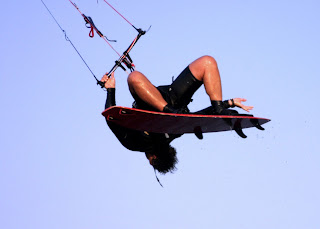
Hello Friends!
I want to talk about this idea of rigidity versus stability. What first got me thinking about it was this article about Pilates that was commenting on our obsession with the "core," and that most of us aren't able to engage the deep midsection muscles. Moreover, most of us tend to think of ab work as something that creates a six pack.
Oddly enough, I've seen people in my class with some great six packs who have clearly been putting in a lot of time on the Ab Master, but can barely hold themselves up in side plank. Although side plank requires a certain amount of strength through the side waist and midsection, it's a relatively simple pose. So whatever they are doing, and I'm certainly not complaining about the aesthetic, there's not much there in terms of function. There's plenty to discuss as it relates to the physical practice of yoga, but maybe this rap would be more interesting if we talk about it as a metaphor for life.
As a person and a human being, it seems that achieving stability without rigidity would be desirable. We want to have abilities, things and people around us that can support us and keep us from getting wacky; at the same time, we want to keep our resiliency. And I mean that both from a mental perspective, the way we think, but also as it relates to how we react to life and life experience. In other words, the ability to bounce back. And when we know we're resilient and that we have the ability to "bounce back" from the most trying of circumstances, I think it affords a certain level of calmness that translates to emotional stability.
On a physical level, how do we apply this concept? On the one hand we have big muscle groups and we can make them big and giant and strong on the surface. Sort of bracing ourselves, or applying a thin layer of cement around our skeleton. There's nothing wrong with that unless we do that to the exclusion of all the deep, internal support systems, like our tendons, ligaments, pelvic floor and diaphragm. And all the little stabilizing muscles that we don't think about much until we need to use them, and we realize "holy crow, I got nuthin'!"
If we can create some stability from the inside out, I think that's a much more effective plan of action vs. patching things from the outside, hoping to create stability on the inside. It's an interesting way to look at our yoga practice, because we often get distracted by the extremities of the pose. For example, "am I touching the floor?", am I holding my big toe?", etc. And what really needs our attention is everything that's touching the floor and holding us up. What does that feel like? Because that's our foundation. And the pose should be built from there. And from there, play with the internal engagements-- the lift of the pelvic floor, the use of the deep belly muscles, et al.
If you're not sure what I'm talking about, get in downward dog and notice how at the end of your exhalation, your low belly sucks up toward your spine and you don't even have to try to do it. Also notice how soft the "six-pack" belly muscles are. there's something deeper than that happening to lift your belly up, and yet the outer muscles are still very, very soft. So what is that? How is it working? There are lots of muscles working there, the psoas being one of them in that case.
The question then becomes, how do we identify, use and strengthen these things? We talk a lot about mula bandha (root lock) and uddiyana bandha (belly lock), and those things, frankly, take most yoga practitioners a solid 1-3 years to really get a handle on. And the refinement of those goes on for a lifetime. I'm just now, after 10 years, getting to the point where I can effectively articulate mula bandha in ways that helps me in different poses.
It's interesting to explore, but if all we're trying to get is strong quads, glutes and a six pack, then we're never going to get all the subtleties. When the big muscles are locked down, the smaller, deeper (but arguably more powerful) muscles can't fire at all. And we won't be as stable, safe or strong in terms of function. We may look strong, but are we strong? And I'm not talking about how much can you bench press, but are you strong enough to support and manipulate your own body. I don't think we have to choose, but if we do choose, do we prefer to BE strong, or LOOK strong?
For me, in my life--- emotionally, mentally, physically, spiritually, I want to BE strong. Hey, I don't mind looking good any more than the next guy ;), but I want it to be real, and authentic, and deep, and from the inside.
So, keep practicing, and I'll see you soon!
Warmly,
Liz Doyle
www.LizDoyleYoga.comlizdoyle@msn.com






















